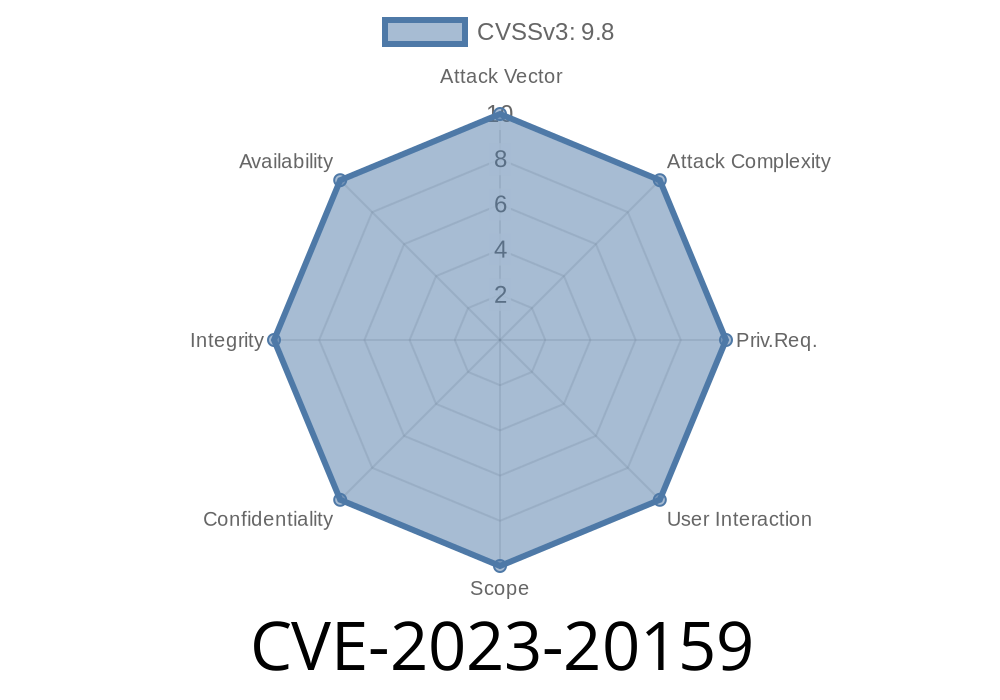A series of vulnerabilities have been discovered in the web-based user interface of certain Cisco Small Business Series Switches. These weaknesses could potentially enable unauthenticated, remote attackers to cause a denial of service (DoS) condition on the targeted device or execute arbitrary code with root privileges. This post will delve into the specifics of CVE-2023-20159, explaining its exploit details, outlining the ramifications of such an attack, and sharing code snippets and links to the original reference documentation.
Details
Four vulnerabilities have been identified and assigned to CVE-2023-20159, each of which pertains to the faulty validation of requests sent to the device's web interface. Attackers could exploit these vulnerabilities to:
Execute arbitrary code with root privileges by sending malicious requests containing arbitrary code.
- Bypass authentication mechanisms and gain unauthorized access to certain components and configuration settings.
- Access sensitive data stored within the device, such as user credentials or network configuration settings.
Exploit Details
When an attacker sends a maliciously crafted request to the device's web interface, the following could occur:
1. The request bypasses existing input validation mechanisms, allowing arbitrary code execution. The executable code runs at the highest root privilege level, providing attackers with access to sensitive system settings and data.
Code snippet example
`
POST /execute_command HTTP/1.1
Host: vulnerable_device_ip
Content-Type: application/x-www-form-urlencoded
`
2. The malformed request could lead to an unexpected resource consumption on the affected device, causing a DoS condition. Consequently, the device becomes unresponsive and requires manual intervention to remedy this issue.
Remediation
To address these vulnerabilities, Cisco has released free software updates that correct the input validation issues in the web-based user interface. Users are encouraged to review the list of affected products and upgrade their devices' firmware to the latest version. Cisco also advises users to protect their devices further by auditing their configurations and enabling the best-practice security measures.
For detailed information about the vulnerabilities, affected products, and remediation steps, refer to the following:
- Cisco Security Advisory: cisco-sa-ciscosb-dos-codeexec-2023_20159
- Cisco's Software Center: Small Business Series Switches firmware download page
Conclusion
The vulnerabilities discovered in the web-based user interface of Cisco Small Business Series Switches pose a significant threat to businesses that rely on these devices to manage their networks. By exploiting CVE-2023-201.59, attackers can cause massive disruptions in services, execute arbitrary code with root privileges, and even gain unauthorized access to crucial system components.
It is crucial for organizations using these devices to update their firmware, audit their configurations, and implement appropriate security measures that minimize the risks of such exploitation. By staying vigilant and proactive about network security, businesses can mitigate the potential consequences of these vulnerabilities.
Timeline
Published on: 05/18/2023 03:15:00 UTC
Last modified on: 05/26/2023 19:21:00 UTC
